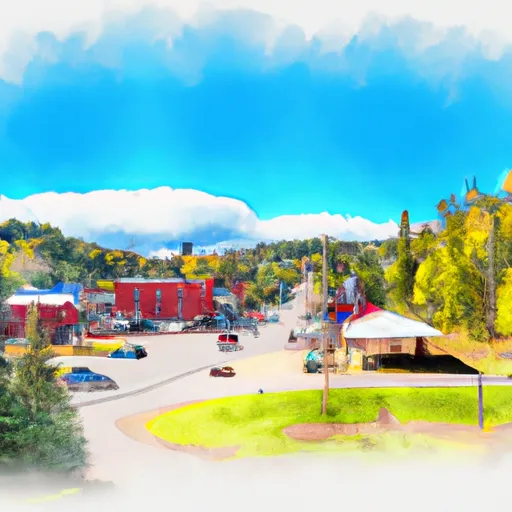-
 Snoflo Premium
Snoflo Premium
Get unlimited access to all our content
With no Ad interruptions! - Start Your Free Trial Login with existing account
Lutsen
Eden Index
Climate
6.1
•
Recreation
5.4
•
Community
•
Safeguard
4.3/10

Lutsen, Minnesota is a charming town located on the scenic North Shore of Lake Superior. It experiences a humid continental climate, characterized by cold winters and warm summers. Winters in Lutsen are snowy and perfect for activities like skiing, snowboarding, and snowshoeing. The average temperature in January, the coldest month, is around 14°F (-10°C). Summers are mild and comfortable, with an average temperature of 68°F (20°C) in July, the warmest month.
Lutsen is surrounded by the beautiful Sawtooth Mountains, making it a paradise for outdoor enthusiasts. The area boasts numerous hiking and biking trails, allowing visitors to explore the breathtaking landscape. The nearby Superior National Forest and Boundary Waters Canoe Area Wilderness offer opportunities for camping, fishing, and canoeing.
The hydrology constituents in Lutsen are dominated by Lake Superior, the largest freshwater lake in the world by surface area. The lake provides a stunning backdrop and offers various water activities such as boating, kayaking, and fishing.
Overall, Lutsen, Minnesota is a nature lover's haven, offering a wide array of outdoor recreation opportunities throughout the year in its picturesque surroundings.
What is the Eden Index?
The Snoflo Eden Index serves as a comprehensive rating system for regions, evaluating their desirability through a holistic assessment of climate health, outdoor recreation opportunities, and natural disaster risk, acknowledging the profound impact of these factors on livability and well-being.
Climate Health Indicator (CHI): 6.1
Lutsen receives approximately
825mm of rain per year,
with humidity levels near 79%
and air temperatures averaging around
3°C.
Lutsen has a plant hardyness factor of
4, meaning
plants and agriculture in this region thrive during a short period during spring and early summer. Most
plants will die off during the colder winter months.
By considering the ideal temperature range, reliable water supplies, clean air, and stable seasonal rain or snowpacks, the Climate Health Indicator (CHI) underscores the significance of a healthy climate as the foundation for quality living.
A healthy climate is paramount for ensuring a high quality of life and livability in a region, fostering both physical well-being and environmental harmony. This can be characterized by ideal temperatures, reliable access to water supplies, clean air, and consistent seasonal rain or snowpacks.
Weather Forecast
Streamflow Conditions
Northwestern Lake Superior
Area Rivers
Northwestern Lake Superior
Snowpack Depths
Northwestern Lake Superior
Reservoir Storage Capacity
Northwestern Lake Superior
Groundwater Levels
Recreational Opportunity Index (ROI): 5.4
The Recreational Opportunity Index (ROI) recognizes the value of outdoor recreational options, such as parks, hiking trails, camping sites, and fishing spots, while acknowledging that climate plays a pivotal role in ensuring the comfort and consistency of these experiences.
Access to outdoor recreational opportunities, encompassing activities such as parks, hiking, camping, and fishing, is crucial for overall well-being, and the climate plays a pivotal role in enabling and enhancing these experiences, ensuring that individuals can engage in nature-based activities comfortably and consistently.
Camping Areas
| Campground | Campsites | Reservations | Toilets | Showers | Elevation |
|---|---|---|---|---|---|
| Klondike County Park | None | 530 ft | |||
| Percy Quin State Park | None | 416 ft | |||
| Little Sunflower River | None | 107 ft | |||
| Babler Memorial State Park | None | 733 ft | |||
| Tickfaw State Park | None | 15 ft | |||
| St. Peters 370 Lakeside Park | 50 | 426 ft | |||
| North Rec Composite | 15 | 97 ft | |||
| Pere Marquette State Park | 80 | 644 ft | |||
| Rocky Springs - Natchez Trace Pkwy | 22 | 235 ft | |||
| South Recreation Composite | 100 | 140 ft |
Nearby Ski Areas
Catastrophe Safeguard Index (CSI):
The Catastrophe Safeguard Index (CSI) recognizes that natural disaster risk, encompassing floods, fires, hurricanes, and tornadoes, can drastically affect safety and the overall appeal of an area.
The level of natural disaster risk in a region significantly affects safety and the overall livability, with climate change amplifying these risks by potentially increasing the frequency and intensity of events like floods, fires, hurricanes, and tornadoes, thereby posing substantial challenges to community resilience and well-being.
Community Resilience Indicator (CRI):
The Community Resilience Indicator (CRI) recognizes that education, healthcare, and socioeconomics are crucial to the well-being of a region. The CRI acknowledges the profound impact of these elements on residents' overall quality of life. By evaluating educational resources, healthcare accessibility, and economic inclusivity, the index captures the essential aspects that contribute to a thriving community, fostering resident satisfaction, equity, and social cohesion.

